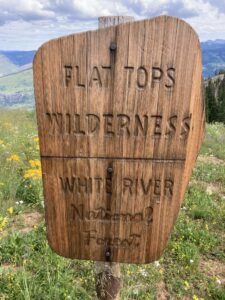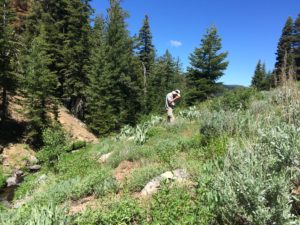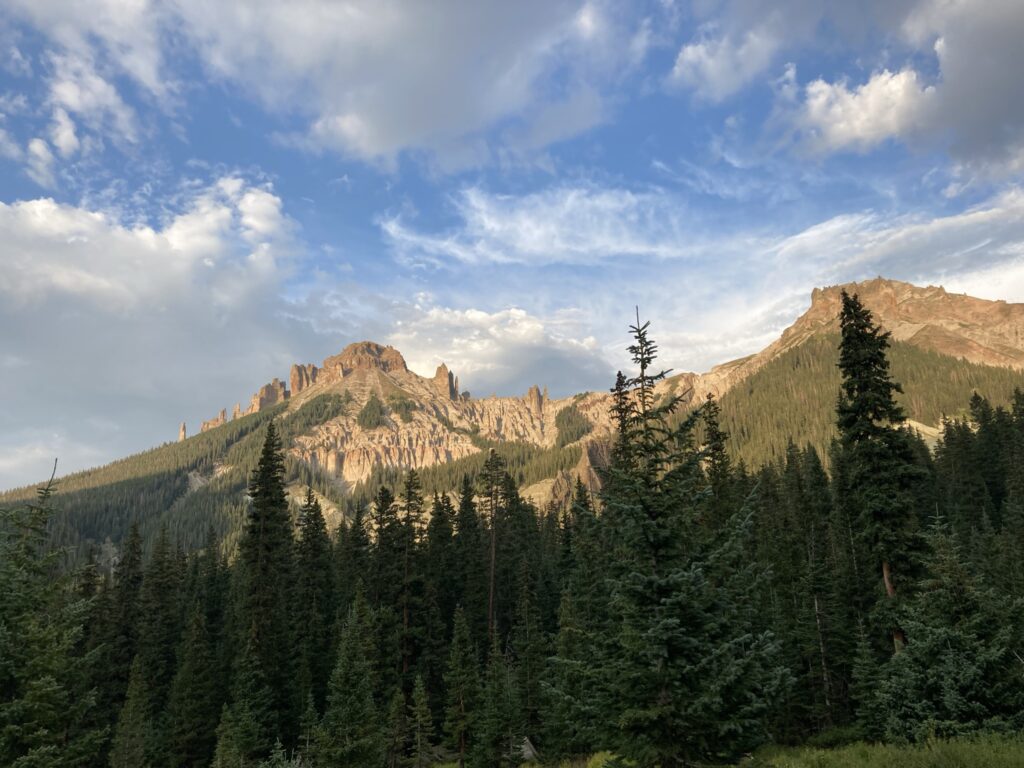AphidTrek is about aphids (and a little about psyllids), travel, and outdoor adventure. Join us to learn about aphids and to see some cool places. I write most of the text here with an intended audience of other avid naturalists, entomologists, botanists, etc. as opposed to the general public. So, I apologize for the lack of a friendly introduction of aphids and their general characteristics. There are plenty of other sites that present that kind of information, but I am happy to help you find good resources if need be.
Photo credit: All the photos on this site are ours, and most are available for your use with permission and attribution. If you use any photos for publications or websites, please credit Andrew Jensen and this website.
Site revisions and additions: In December of 2024 I went through all the Aphids pages and 1) updated information about currently listed species, and 2) made it easier to navigate to species of interest. In the coming months and years I hope to add many more species and what I know about them. In lieu of live photos, I am starting to capture photos of slide-mounted specimens and will share some here. My equipment for this is not the best, so the photos will not display much taxonomically useful information other than general appearance. I’ll try to indicate at the top of each genus page that edits have been made and when. Some genera I will initially leave unchanged because what I have here now needs no updating until I add new species accounts. I have also added a tab for what I hope will be an ongoing series of taxonomic stories and essays. In a perfect world I’d make the whole site a bit more modern and easy to navigate, but hurdles to that have emerged which may take some time to overcome.
Most of the information here is about our weekends and vacations — about our hobbies. But sometimes aphid field biology is practical. See our ‘Science & Misc.’ tab for ways that we might be able to assist you in agricultural pest management, entomology research, and more.
I (Andy Jensen) have been avidly collecting aphids most growing seasons since 1988. My aphid collection is over 14,400 slides, with probably at least 40,000 specimens (being entirely funded by my personal bank account, I conserve money and time by mounting 3 or 4 specimens on each slide) of about 629 identified species. Click here if you are interested in my list of peer-reviewed papers. I’ve published 31 new species of aphids (27 species) and whiteflies (four species — I no longer study whiteflies) since 1999, some with co-authors.

I love the old-fashioned natural history of studying animals and plants in their natural habitats by simply going out in the field and looking at what they do, what they eat, and where they live. Because my Ph.D. was in aphid research, it is aphids that I happen to collect along the way. Working on a group of plant-feeding insects means I know a lot of botany too, and much of my field work is simple ‘botanizing.’ I enjoy learning, and the area of learning I’ve chosen to devote myself to is the natural world of plants and insects.
Further, here is what I wrote in a published paper in 2017 about why I focus on collecting, species descriptions, and natural history: “The two species described here bring the total to seventeen new Macrosiphum species I have participated in describing from North America since 2000. Most of these have been collected in a wide range of places and observed in the field for years prior to being described. Not only have these seventeen new species been documented, but most years I still discover what appears to be another new species of Macrosiphum, setting me on a new multi-year quest for adequate information on it to justify a description such as those presented here. The aim with thorough biology and distribution work with each new species has been to inform future work on the evolution and biogeography of Macrosiphum and related genera.
If a thorough revision of Macrosiphum and analysis of its phylogenetics and biogeography had been attempted prior to 2000, the analysis would have lacked far too much information about the actual diversity of the group to reach viable conclusions. Based on my field work in western U.S.A. and Canada, small samples I have seen from Mexico, and the need for exploration of aphidology in northeastern Asia, much more natural history observation, collecting, and new species description are required to adequately populate any analysis of the genus Macrosiphum as a whole. In the coming decade or more, I hope to generate much more work like is presented in this paper, and I encourage others to do the same with their taxa of interest, thereby building toward comprehensive studies of biogeography and evolution of aphids.” This sentiment applies to many genera of aphids, not just Macrosiphum.



